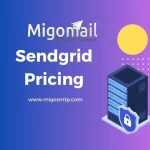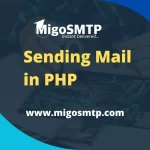Growing your customer relationships and manage to convert new prospects is always a tough job. Email marketing comes to play here. Especially, in the education sector when the admission season is at its peak, and with constant growing competition, it is important for you to tap all major marketing platforms to generate leads. Results have proved that Email Marketing plays a vital role in maximizing conversions for the education sector.
Why Email Marketing in Education Sector?
Today, 82% of students own a smartphone and 62% of students use their handsets to check emails. Generally, this age group is typically between 16-22 years of age. Parents too are concerned about their child’s admission. Teachers, advisers to add up to your targeted mailing list, who take active participation in college admissions. Email Marketing provides solutions for the education sector to create and send newsletters, fundraising requests and event updates to targeted mailing lists.
See how Mails were sent in earlier time, with many problems and formalities…
Steps to a Successful Education Sector Marketing Strategy
Consider key timings
Look at when in the year you can best plan or review your marketing strategy, also allowing time for implementation. Recommended timings are preparing for the new academic year in JUNE and getting ready for the new financial year and spring term in NOVEMBER. Regardless of your budget, setting aside time at critical points in the year to work on your marketing strategy will help you generate demand that leads to filling those spaces.
Understand & Use social media
Prospective students now expect you have a strong social media presence across key channels, including Facebook, Twitter, and YouTube. Being present on these channels helps you keep your college in front of mind so make sure you’re making the most of social platforms.
Become a ‘page one’ search result on Google
When parents and students are researching suitable education providers online, it’s essential that you’re a top result. Google AdWords is the most effective way to help drive traffic to your website. There is, of course, a huge amount of relevant competition in AdWords. So it’s important you know what you’re doing when setting this up! It’s also a good idea to work with someone who is experienced in SEM, otherwise, it can become very expensive.
Get some credibility
Testimonials from past students, awards you’ve won as well as your latest results are crucial to building up the credibility behind your story. These are all great endorsements which can be incredibly powerful, just like the ‘Trip Advisor’ effect on the leisure industry.




 Being able to lead the customer further down the funnel on their own terms is a
Being able to lead the customer further down the funnel on their own terms is a 





